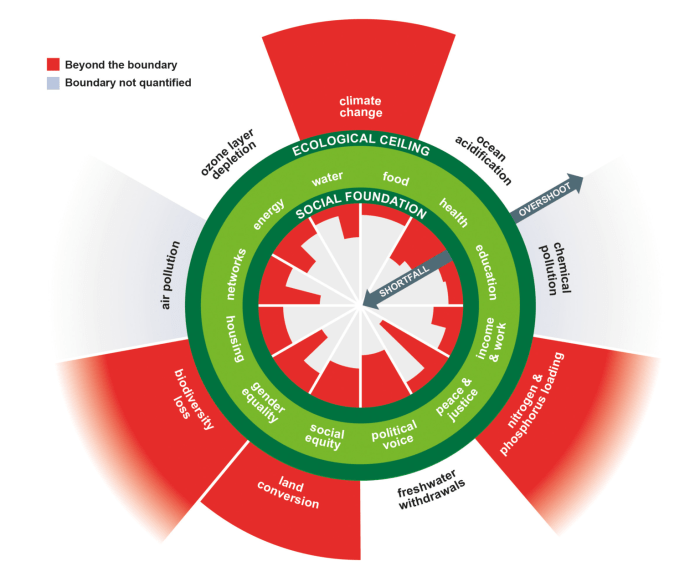Prepare to delve into the fascinating world of legal jargon as we explore the enigmatic “law of the donut answer key.” This comprehensive guide will unravel the complexities of this principle, tracing its historical roots and examining its practical applications.
Throughout this journey, we will uncover the origins of this concept, analyze its evolution, and compare its interpretations across different legal systems. By shedding light on the ethical and social considerations surrounding the “law of the donut,” we aim to empower readers with a profound understanding of its significance.
Legal Concepts and Principles

The “law of the donut” is a legal principle that refers to the idea that the outer and inner edges of a donut are considered to be separate legal entities.
This principle is often applied in real-world legal scenarios involving property disputes. For example, if a person owns the outer edge of a donut, they may not have the right to access the inner hole of the donut without permission from the owner of that space.
Exceptions to the Law of the Donut
There are some exceptions to the law of the donut. For example, if a person owns the entire donut, they would have the right to access both the outer edge and the inner hole.
Additionally, if a person has a valid easement or other legal right to access the inner hole of a donut, they may be able to do so even if they do not own the outer edge.
Historical Evolution and Origins

The “law of the donut” has a rich history dating back to ancient legal systems. Its origins can be traced to the concept of “holes” in legal rules, where certain actions or circumstances were not explicitly addressed by the law.
Over time, the principle evolved to encompass the idea that the law should be flexible enough to adapt to changing circumstances and unforeseen situations. This flexibility has allowed legal systems to remain relevant and effective in the face of societal and technological advancements.
Key Figures and Cases
- Aristotle:In his treatise “Nicomachean Ethics,” Aristotle discussed the importance of equity and the need for laws to be adaptable to individual circumstances.
- Roman Law:The Roman legal system recognized the concept of “exceptio doli,” which allowed judges to make exceptions to general rules in cases of fraud or deception.
- Common Law:The English common law system developed the doctrine of “stare decisis,” which requires courts to follow precedent. However, this doctrine also allowed for exceptions in cases where the precedent was unjust or inapplicable.
Comparative Legal Analysis

The “law of the donut” is a principle that seeks to strike a balance between the rights of property owners and the interests of the public. It has been interpreted and applied differently in various legal systems and jurisdictions, leading to variations in its implications for legal practitioners and scholars.
The law of the donut answer key is a fun way to learn about math. But what if you want to learn about words that end with ence? Here’s a list of words that end with ence . Now you can learn about math and expand your vocabulary at the same time!
Similarities in Interpretation
- In most jurisdictions, the “law of the donut” recognizes the right of property owners to use and enjoy their property as they wish.
- However, this right is not absolute and may be limited by the rights of others and the interests of the public.
- The principle seeks to ensure that the use of property does not unreasonably interfere with the enjoyment of neighboring properties or the well-being of the community.
Differences in Application
Despite these similarities, there are also differences in how the “law of the donut” is applied in different jurisdictions.
- Zoning laws:Some jurisdictions have adopted zoning laws that restrict the use of property to specific purposes. These laws can limit the ability of property owners to use their property as they wish, but they also help to ensure that the use of property is compatible with the surrounding area.
- Nuisance laws:Nuisance laws allow property owners to seek legal remedies against activities that unreasonably interfere with the enjoyment of their property. These laws can be used to address a wide range of issues, from noise pollution to air pollution.
- Eminent domain:In some cases, the government may have the right to take private property for public use. This right is known as eminent domain. However, the government must pay just compensation to the property owner for the taking.
Implications for Legal Practitioners and Scholars, Law of the donut answer key
The variations in the interpretation and application of the “law of the donut” have implications for legal practitioners and scholars.
- Property law:Lawyers who specialize in property law must be aware of the different ways that the “law of the donut” is interpreted and applied in different jurisdictions.
- Land use planning:Scholars who study land use planning must consider the role that the “law of the donut” plays in shaping the use of property.
- Public policy:Policymakers must consider the implications of the “law of the donut” when making decisions about land use and property rights.
Ethical and Social Considerations

The “law of the donut” raises several ethical and social considerations. It emphasizes the importance of protecting the rights of the marginalized and vulnerable in society. By ensuring that everyone has access to essential resources, this principle promotes fairness, equity, and justice.
Potential Challenges and Drawbacks
- Implementation:Implementing the “law of the donut” can be challenging, especially in societies with significant economic disparities. It requires a comprehensive approach that addresses underlying social and economic issues.
- Resource Allocation:Determining how to allocate resources fairly can be a complex task. It involves balancing the needs of different groups and ensuring that essential services are accessible to all.
- Enforcement:Enforcing the “law of the donut” requires strong political will and public support. It may face resistance from those who benefit from the existing distribution of resources.
Practical Applications

The “law of the donut” finds practical applications in various legal settings. It is commonly invoked to determine the scope of intellectual property rights, such as trademarks and copyrights, and to resolve disputes involving similar or confusingly similar products or services.
In trademark law, the “law of the donut” is used to assess the likelihood of confusion between two trademarks. The courts consider factors such as the similarity of the marks, the proximity of the goods or services offered, and the strength of the plaintiff’s mark.
If the marks are sufficiently similar and used in connection with competing products or services, the court may find a likelihood of confusion and grant an injunction or other relief to the plaintiff.
Copyright Law
In copyright law, the “law of the donut” is used to determine whether a work is substantially similar to a copyrighted work. The courts consider factors such as the overall similarity of the works, the copying of specific elements, and the amount of the copyrighted work that has been used.
If the works are found to be substantially similar, the court may find that the defendant has infringed the plaintiff’s copyright.
Hypothetical Legal Scenario
Consider the following hypothetical legal scenario:
Donut Delight, a popular donut shop, has been operating for several years. Recently, a new donut shop called Donut Heaven opened across the street. Donut Heaven’s logo is nearly identical to Donut Delight’s, and it offers a similar menu of donuts and other pastries.
Donut Delight believes that Donut Heaven is infringing on its trademark rights. The court would apply the “law of the donut” to determine whether there is a likelihood of confusion between the two trademarks. If the court finds that there is a likelihood of confusion, it may grant an injunction prohibiting Donut Heaven from using the similar logo and menu.
Benefits and Drawbacks
The “law of the donut” provides several benefits in legal settings:
- It helps to protect intellectual property rights and prevent confusion in the marketplace.
- It provides a clear and predictable standard for determining the scope of intellectual property rights.
- It promotes innovation and creativity by encouraging the development of new and distinctive products and services.
However, the “law of the donut” also has some potential drawbacks:
- It can be difficult to apply in practice, as it requires a subjective determination of similarity.
- It can lead to overprotection of intellectual property rights, which can stifle competition and innovation.
- It can be expensive and time-consuming to litigate disputes involving the “law of the donut.”
Expert Answers: Law Of The Donut Answer Key
What is the “law of the donut”?
The “law of the donut” is a legal principle that suggests that the most important part of a legal argument is the “hole” in the middle, which represents the key issue or question that needs to be addressed.
How is the “law of the donut” used in practice?
Lawyers often use the “law of the donut” to structure their arguments and identify the most important points to focus on. By focusing on the “hole” in the middle, they can ensure that their arguments are clear, concise, and persuasive.
What are the limitations of the “law of the donut”?
The “law of the donut” can be limited in situations where there is no clear “hole” in the middle, or where the issue is complex and requires a more nuanced approach.